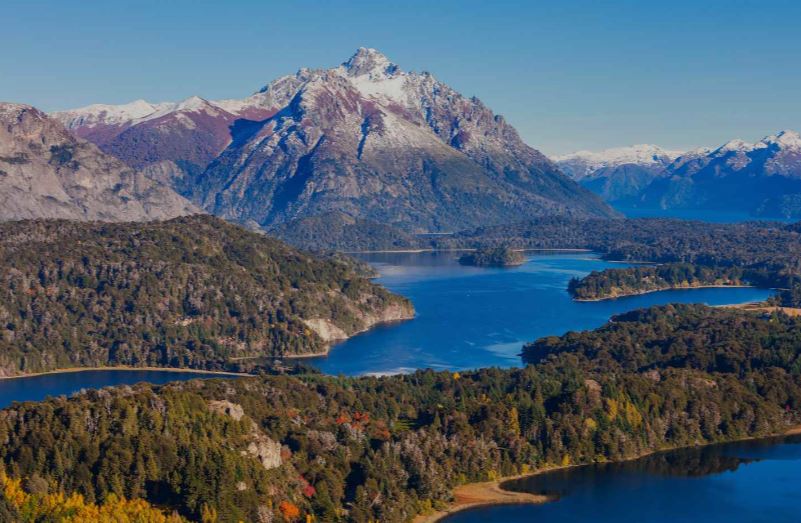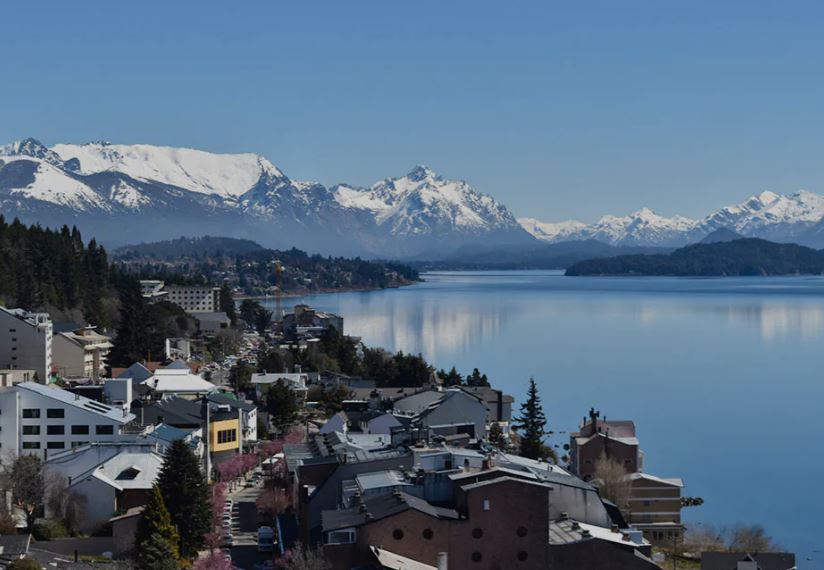
Patagonia is located in the southernmost regions of Argentina and Chile. It covers an area in Argentina from the Rio Negro province all the way down to Ushuaia and Tierra Del Fuego, the departure point for cruise ships making their way to Antarctica. Patagonia covers approximately 1/3 of the entire country and nearly half of Chile. The vast size of this region is roughly equal to the size of 2 Californias. As such, the area offers immense geographical diversity covering the two coasts, mountains, deserts, lakes, rivers, savannas and forests. It is an adventurer’s paradise offering glacier trekking, hiking, mountain climbing, mountain biking, horse riding, fishing, kayaking, SUP, motorized water sports, white water rafting, fishing, star gazing, estancia stays, and in the winter, skiing and other snow adventure sports.
The first stop north in Argentina’s Patagonia region is San Carlos Bariloche, a charming town with a permanent resident population nearing 200,000 and a "second home" population easily doubling that number. A favorite playground and place to escape for residents of Buenos Aires and even Santiago, Chile, Bariloche is also known for its Swiss-alpine style architecture as well as its chocolate. Popular year round, the best weather for outdoor enthusiasts, other than skiers, is the months of October- March, with April and May being colder and very windy, limiting the water sports activities and complicating fly fishing. Cerro Catedral, the largest ski resort in South America is just 15 minutes outside the town center and offers full accomodations and ski town restaurants, bars and gaming activities. The ski areas normally open in June with the best skiing in the August time frame.
Bariloche sits on the shores of Lake Nahuel Huapi, a large glacial lake surrounded by the Andes Mountains, with several islands, peninsulas and inlets. As a glacial lake the temperature of the water, even in summer, is about 14 degrees C or about 57 degrees, farenheit (brrrr!), yet brave swimmers, beach bums, kayakers, stand up paddle boarders and fishermen flock to the glistening pristine waters. The area boasts incredible national parks and spectacular scenery. The Andes run through the middle of the region ,providing snowcapped backdrops throughout the year. Red fox, guanacos, condors and trout are the most seen fauna in the area.

Bariloche also is a short distance to Puerto Montt and the Lakes region of Chile, different in its landscape due to volcanic activity on the eastern side, but abundant in lakes and rivers. Chile can easily be reached by ferry boat across Nahuel Huapi where one can cross into the neighboring country at an immigration post manned for a short time each day to welcome the ferry visitors.
Recommended hotels in the area line the lake shores, with some of the more remote destinations offering shuttle transport to local restaurants and bars. Most of the preferred hotels are located several kilometers from the town center, but there are plenty of walking-accessible restaurants outside of the hotels. Among our favorites are Alderbarren, El Casco Art Hotel and Alma del Lago.
(Click arrows for slideshow)
Bariloche’s airport has multiple flights per day to several cities within Argentina, making it easy to get around in Patagonia without having to return to Buenos Aires each time. In season, the flights are available to Mendoza, for world-class wineries, and Cordoba, for its rich colonial heritage.
When you go to Argentina, do not miss this gateway to Patagonia and plan on spending at least 3 nights to enjoy all the area has to offer. (And try to avoid fly fishing in the wind.)













コメント